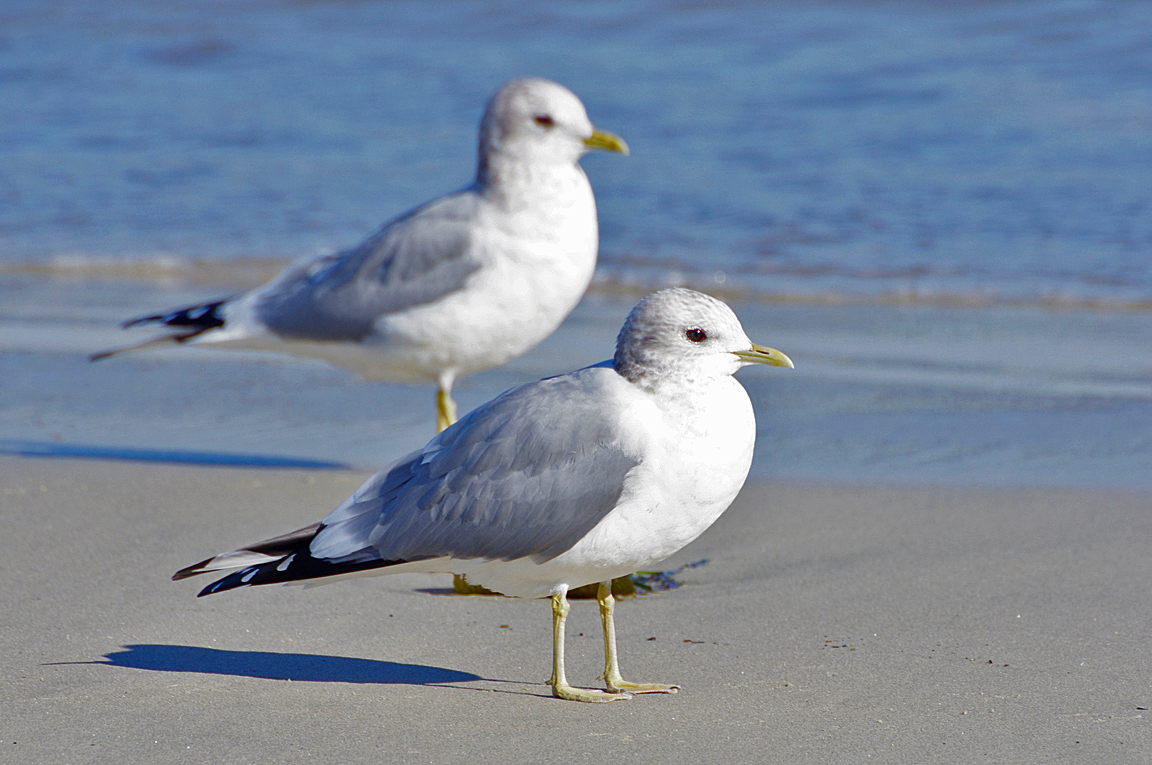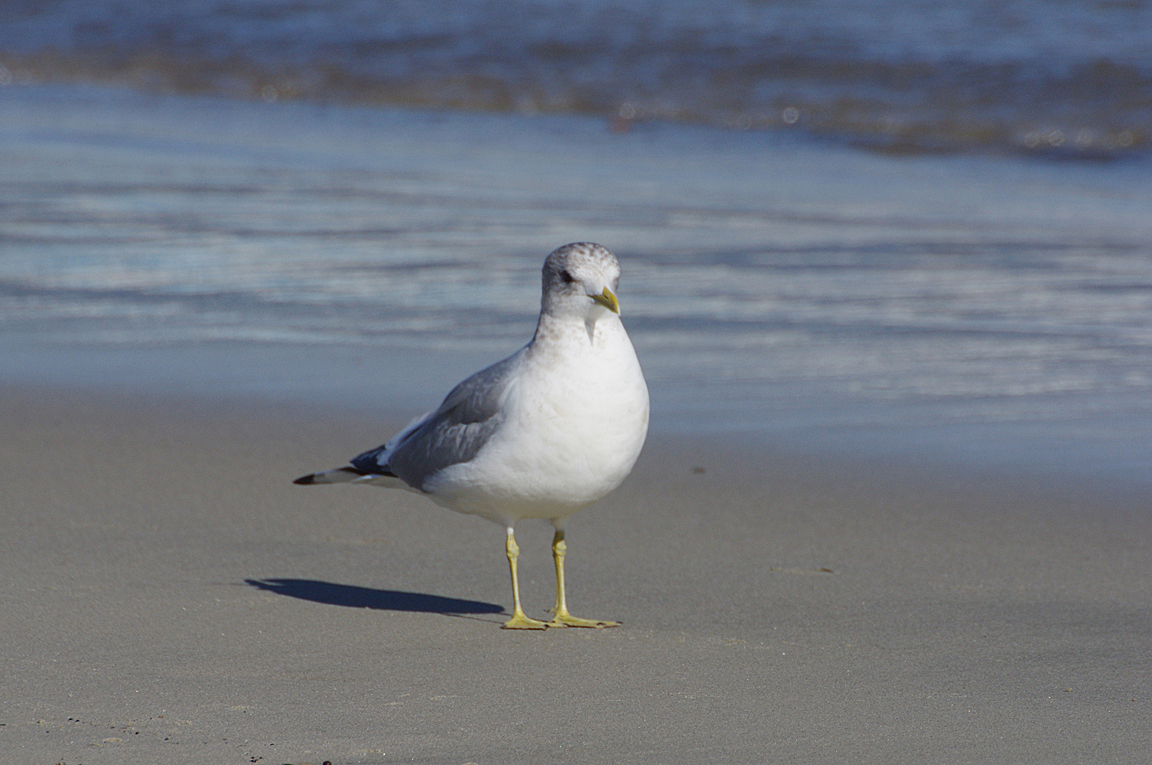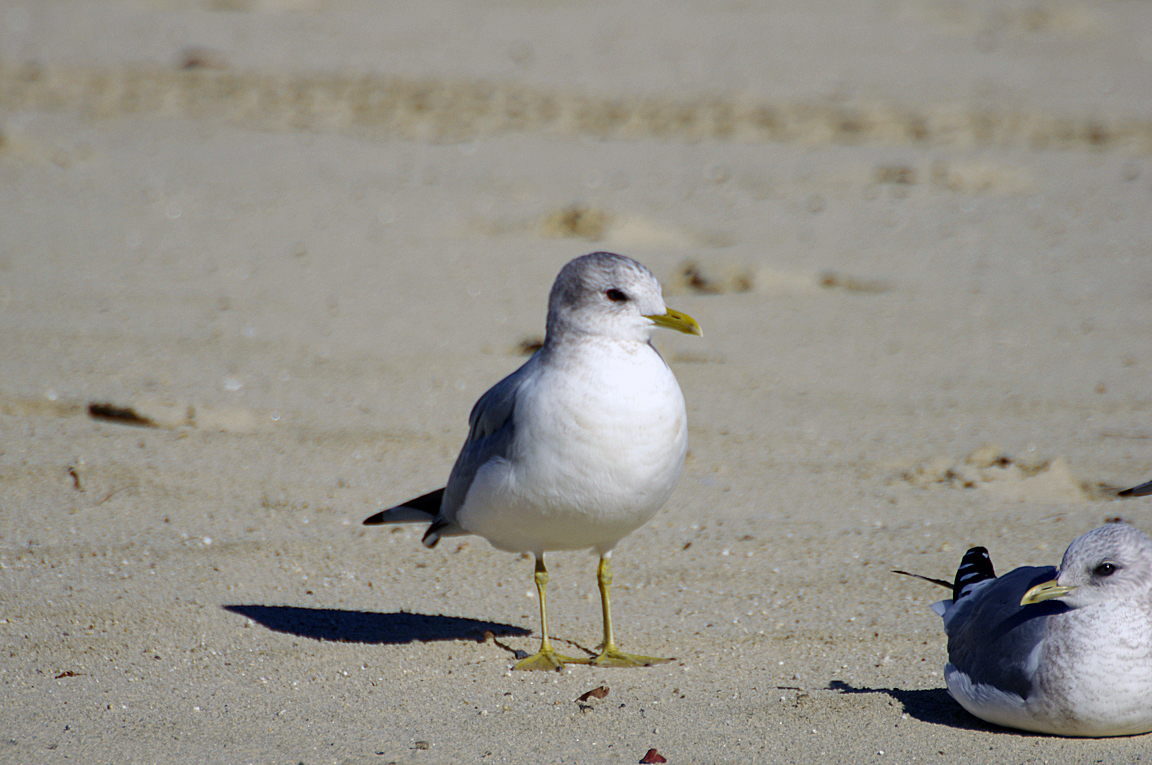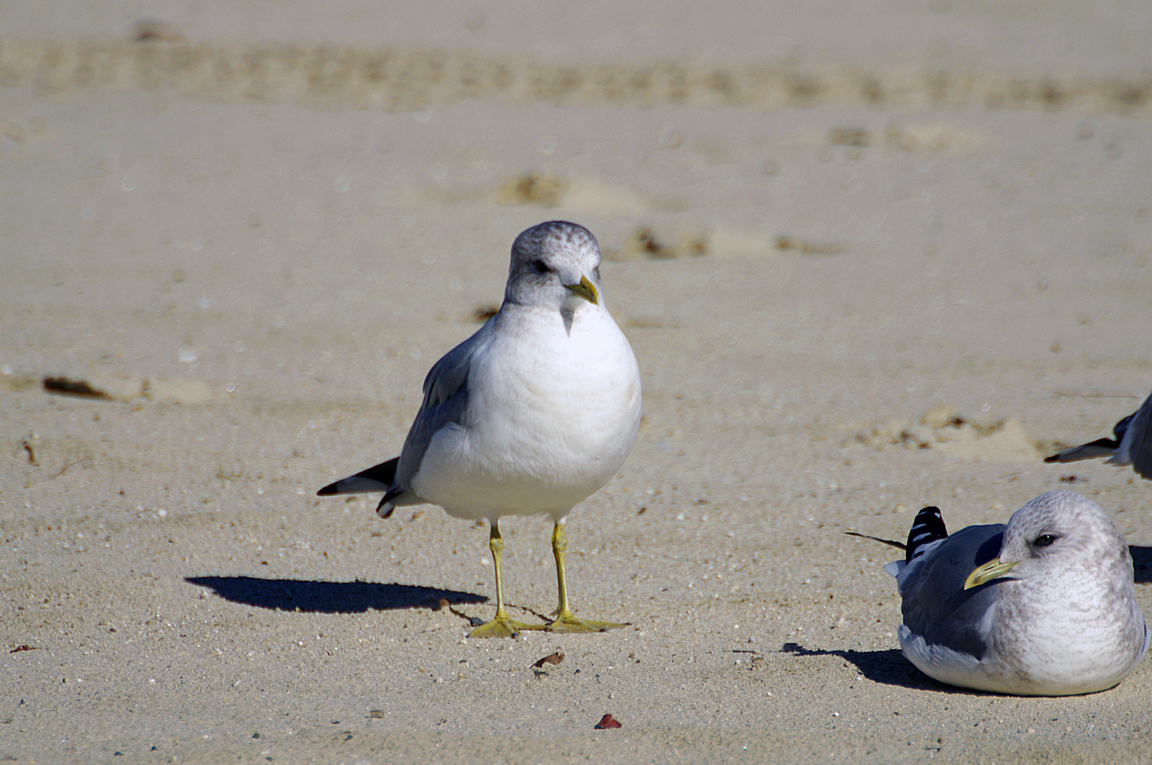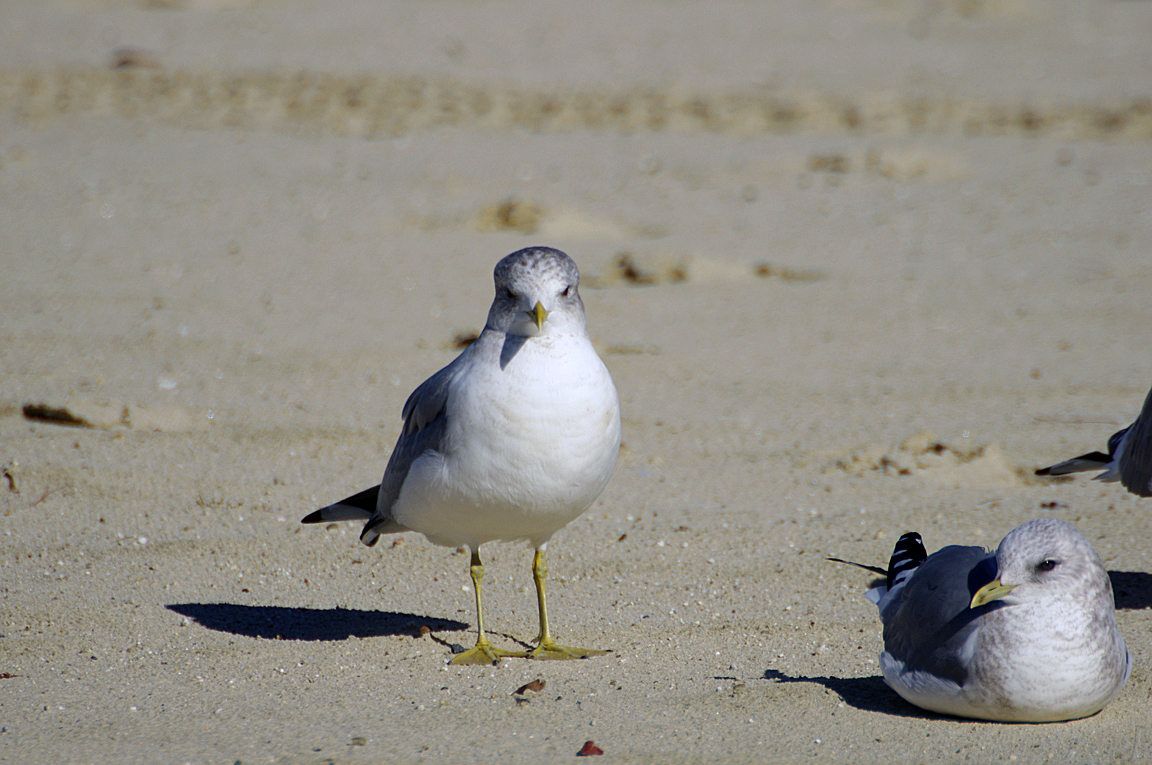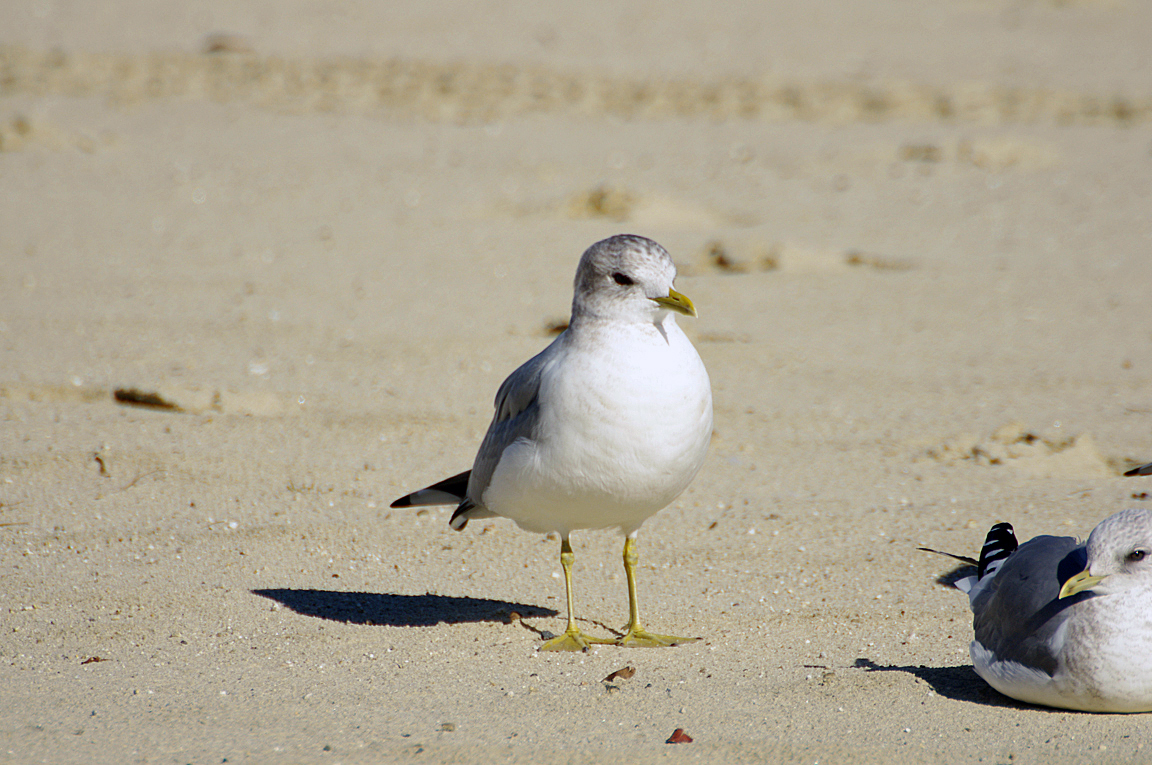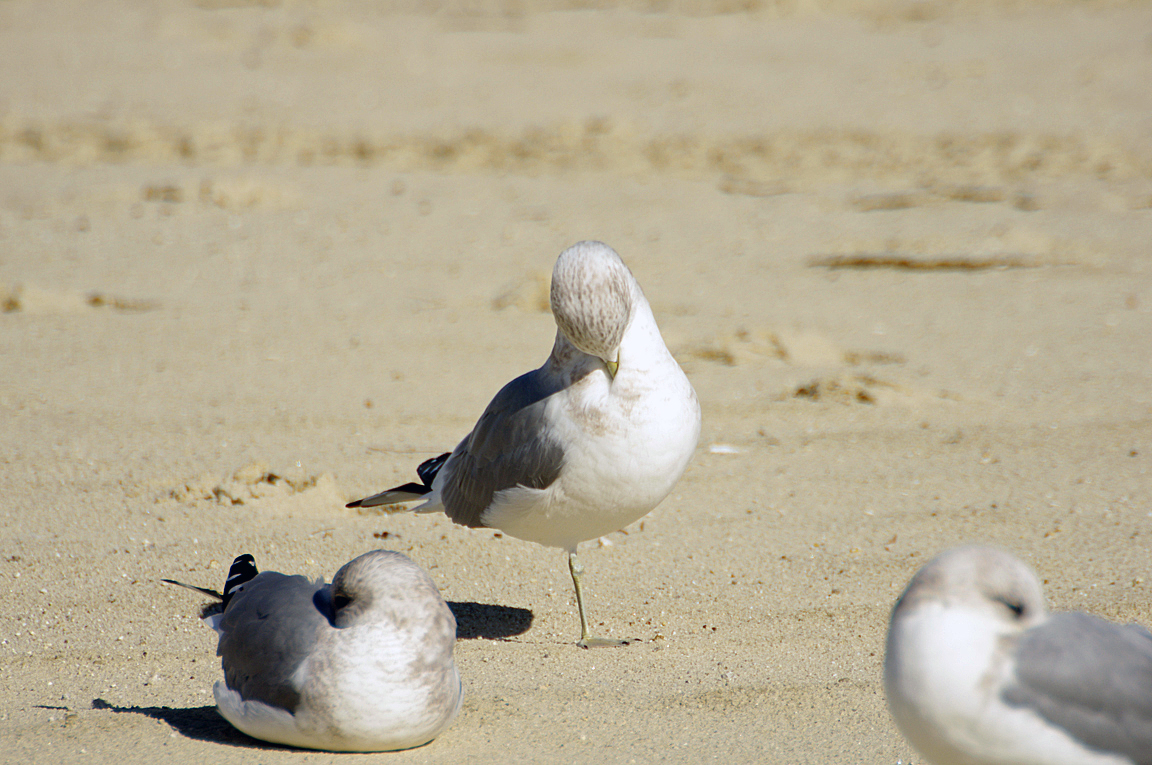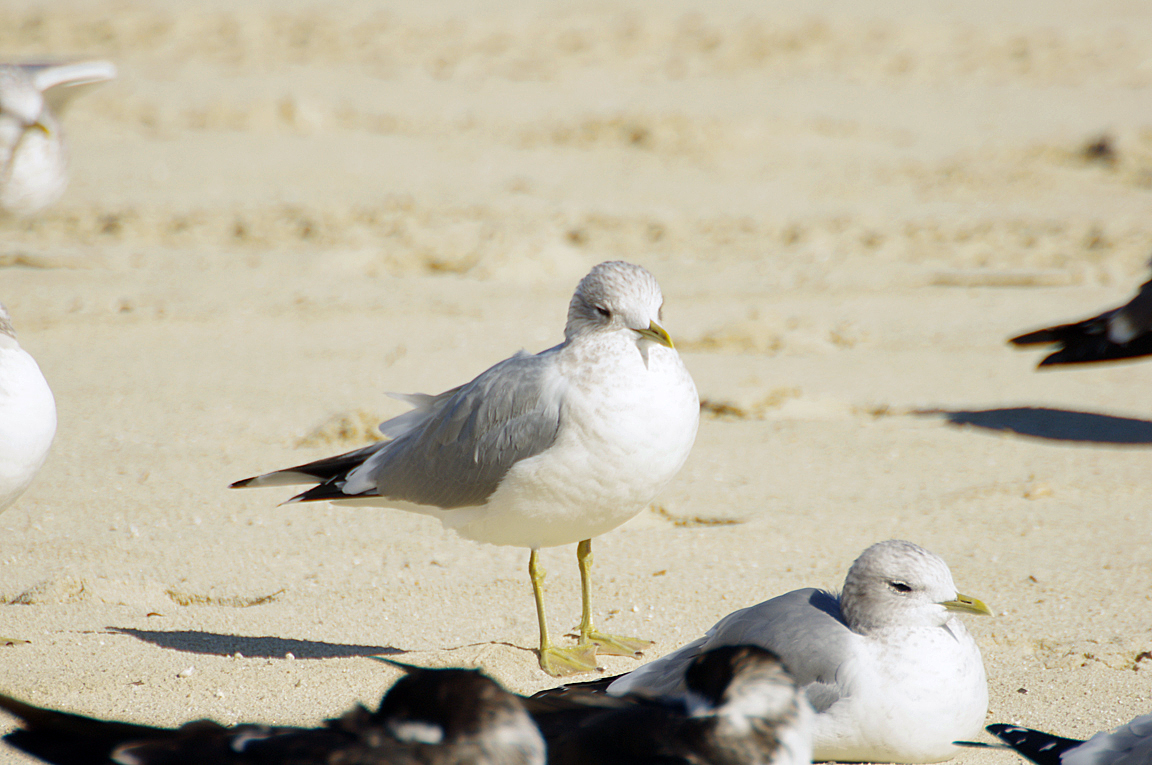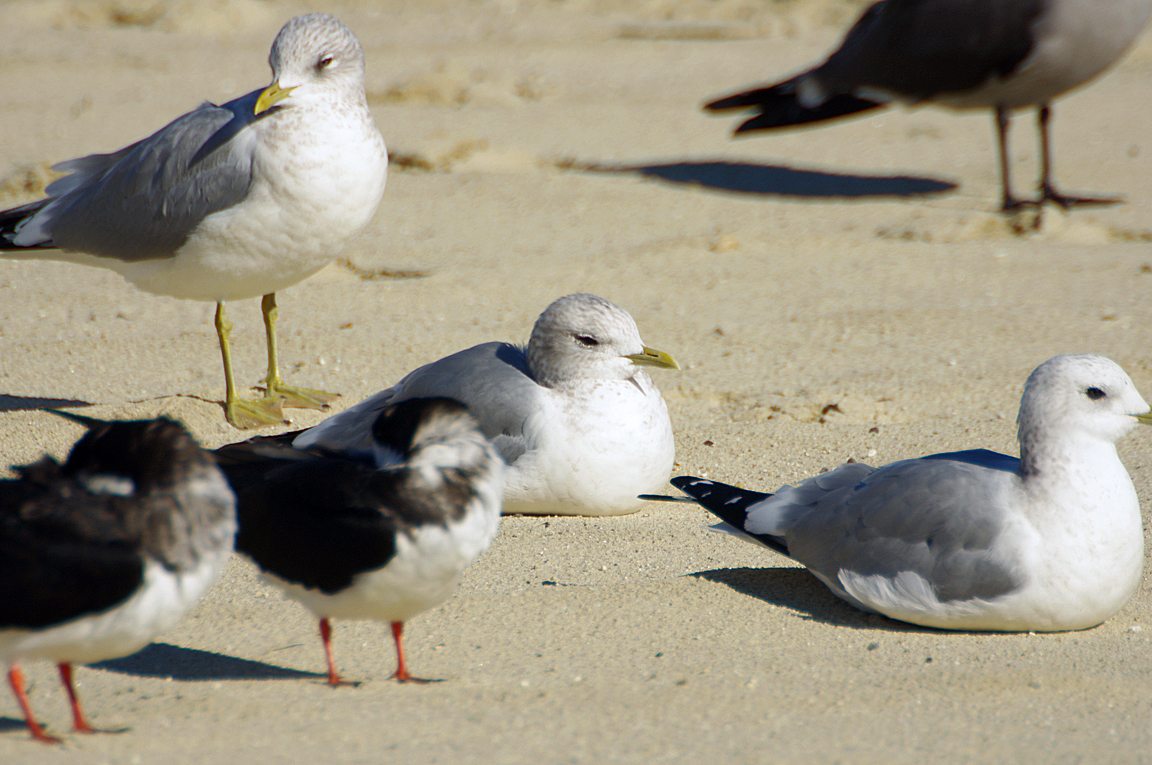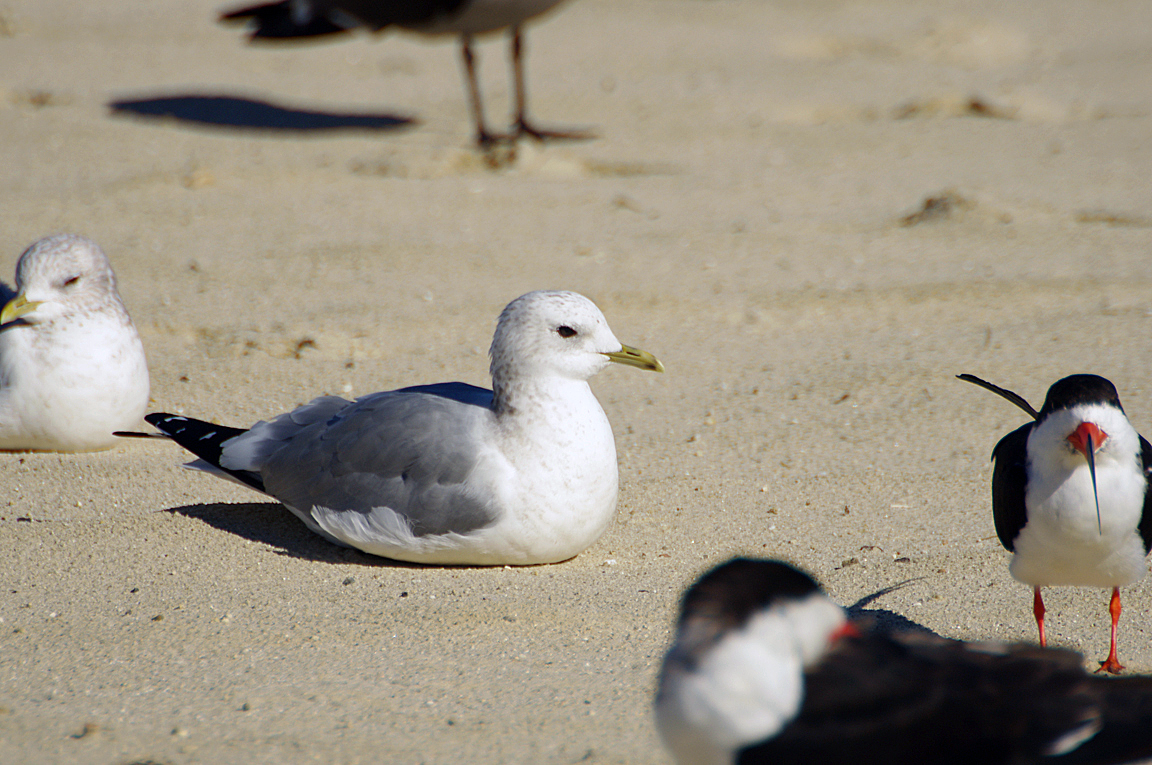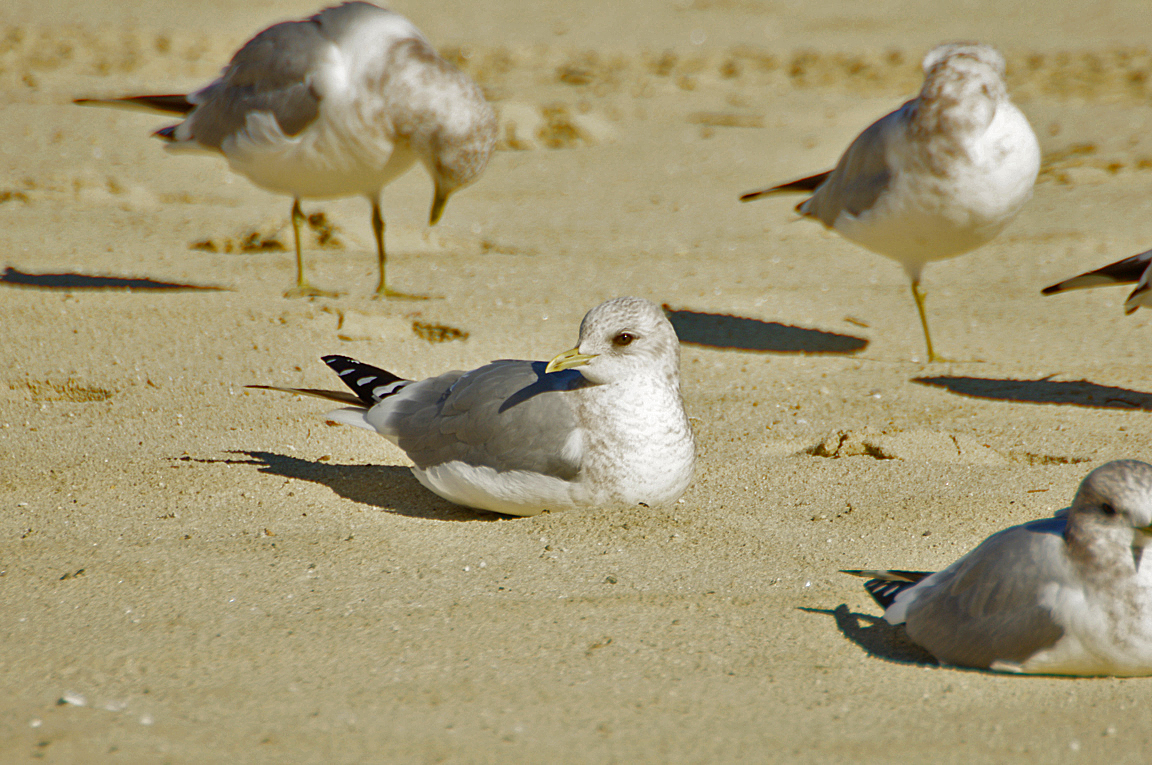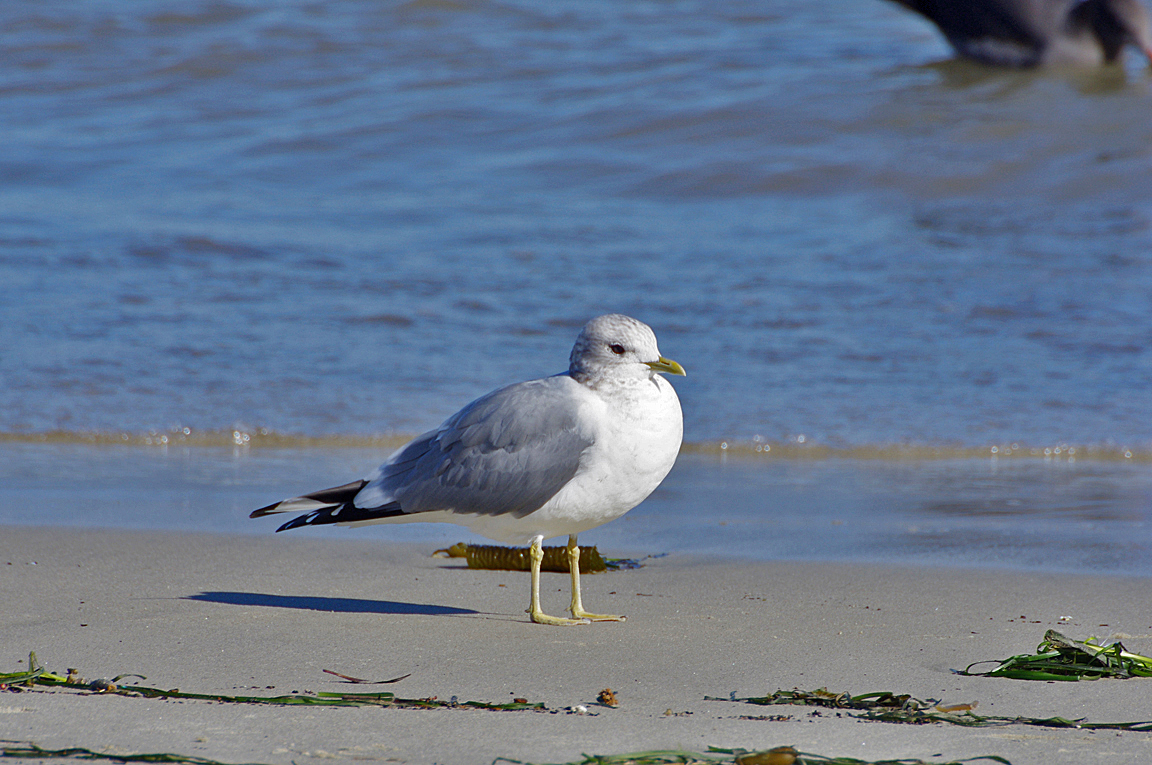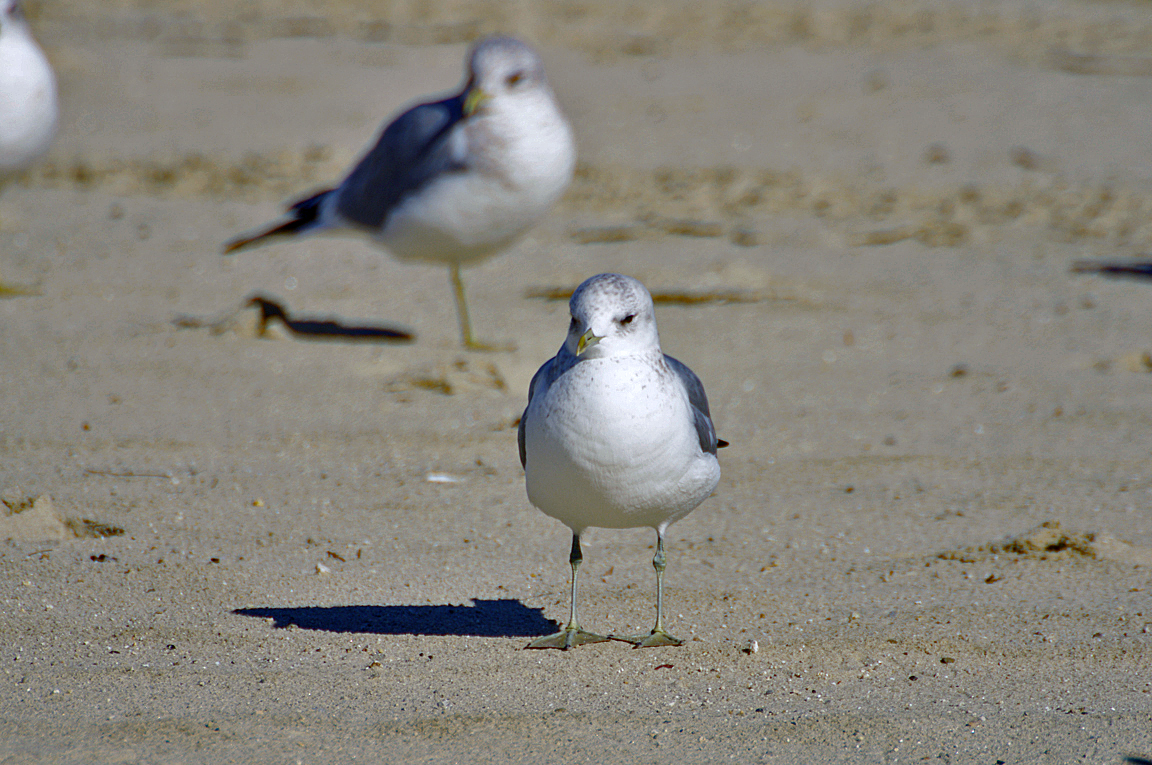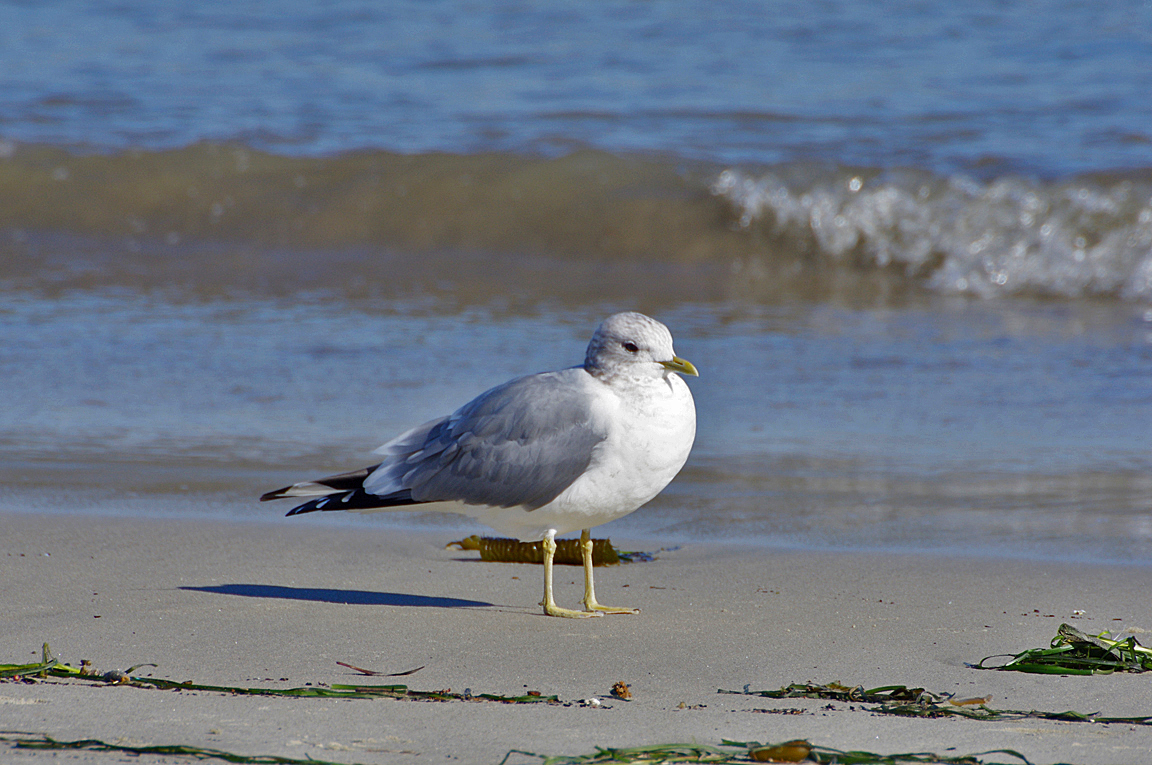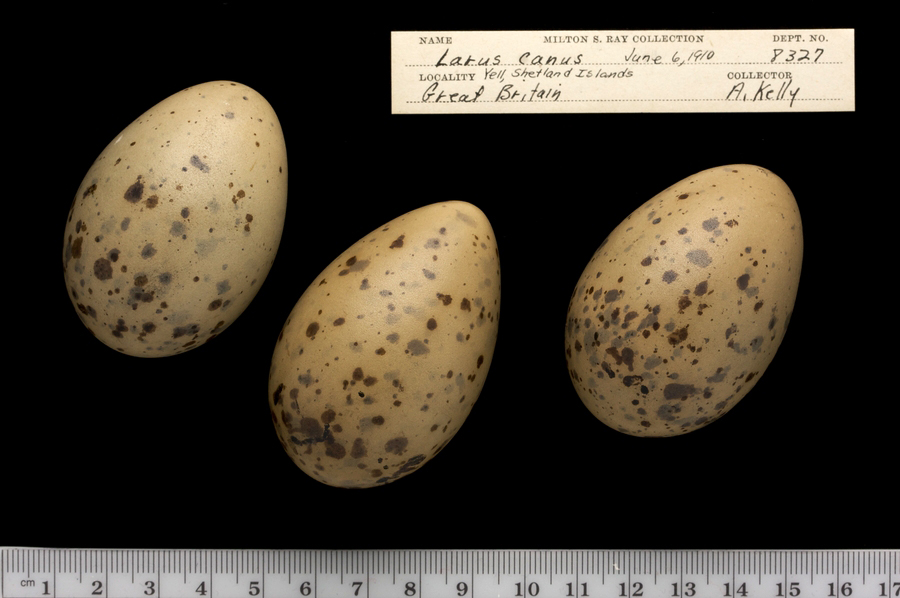|
|
|
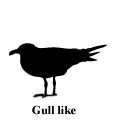 |
Mew Gull
|
| Larus canus | |
One of the smallest of the "white-headed" gulls, the Mew Gull is common along Pacific Coast beaches in winter. It also occurs in Eurasia, where it is known at the "Common Gull."
Interesting Information
-
The Mew Gull has an extensive breeding range, with three distinct forms that are sometimes considered different species. The European form, known as the "Common Gull" has less white in the wingtips than the American form, or "Short-billed Gull," and its first-year plumage is much paler. The eastern Asian form known as "Kamchatka Gull" is larger, with a larger bill, and pale yellow eyes.
-
Although the Mew Gull is a common bird along the Pacific Coast, it is a rarity in the East. Birds that appear along the Atlantic Coast are likely to be from Europe.
-
The Mew Gull is the only "white-headed" gull that regularly uses trees for nesting.
-
The European form of the Mew Gull, the "Common Gull," closely resembles the American form in adult plumage, but the two forms differ more in juvenile and first winter plumages. The American form is all dirty gray, with a mostly dark brown tail and dusky wings. The European form is much more black and white, with a paler head and underparts, a white rump and upper tail, a black band on the tip of the tail, blackish wingtips, and a dark line along the back of the wing (the secondaries).
Description
Adult Description
-
Length Range: 41-46 cm (16-18 in)
-
Weight: 431 g (15.2 oz)
-
Size: Large (16 - 32 in)
-
Unmarked yellow bill.
-
Head and underparts white.
-
Back medium gray.
-
Wingtips black with white spots.
-
Legs yellow.
Sex Differences
Sexes Similar
Immature
Juvenal Plumage: Dirty, grayish brown head, back, and chest. Back feathers with light tips, giving a scaly appearance. Underparts light brownish gray, barred on the flanks. Tail dark brown, with slightly paler base. Wingtips blackish. Bill black. Eyes dark. Legs pinkish.
First Winter (Basic I) Plumage: Like juvenal, but head and belly paler.
First Summer (Alternate I) Plumage: Back gray. Wing coverts worn and white. Head whitish. Wingtips worn and pale.
Second Winter (Basic II) Plumage: Back mostly gray; some feathers brown. Head and neck washed with grayish brown. Tail white with irregular black band near tip. Feathers of wingtips black or blackish, with only small white spots.
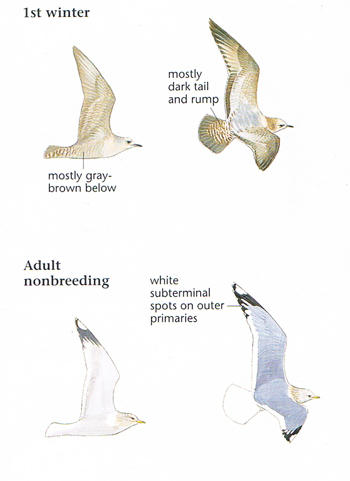
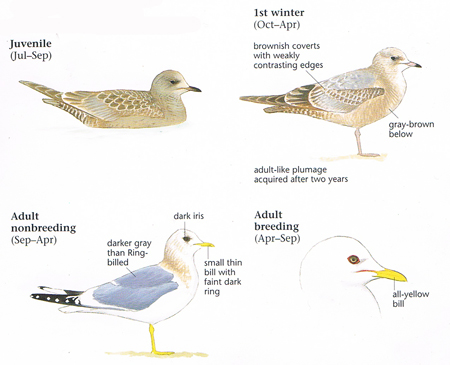
Photo taken from: The Sibley Field Guide by David Allen Sibley
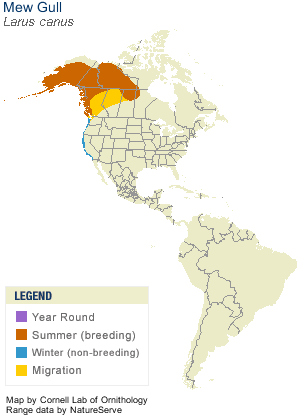
© 2003 Cornell Lab of Ornithology
|
Habitat |
|
Breeds in tundra, marshy areas, ponds, lakes, rivers, streams, islands, and coastal cliffs. Winters in nearshore waters and coasts, river estuaries, beaches, mudflats, harbors, and sewage outfalls and treatment ponds. |
|
Behavior |
|
Flutters over water, head down, and legs dangling to pick up bits of food from water surface. Sometimes paddles against current, picking up food as it floats past. Occasionally dives into water for fish. |
|
Food |
|
Fish, insects, earthworms, grain, garbage, marine invertebrates. |
Taxonomy
| Kingdom: | Animalia |
| Phylum: | Chordata |
| Subphylum: | Vertebrata |
| Class: | Aves |
| Order: | Charadriiformes |
| Family: | Laridae |
| Subfamily: | Larinae |
| Genus: | Larus |
| Species: | Larus canus |
| Subspecies: | Larus canus brachyrhynchus |
| Larus canus canus |
Similar Species |
|
|
Bird Sound |
|
Call a high, sharp squeak, more abrupt than whining of most other gulls. |
|
Eggs look like this |
|
Photo taken from: ARCTOS Collaborative Collection Management Solution |
